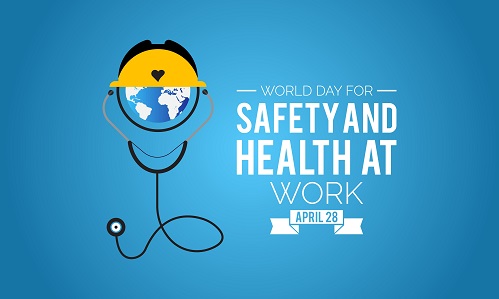World Day for Safety and Health at Work is observed every year on 28 April to promote the prevention of occupational accidents and diseases globally
 Satywan Saurabh
Satywan Saurabh

The business world is undergoing profound changes. Governments, employers and workers, and other stakeholders need to take advantage of opportunities to create a safe and healthy future workplace for all. Their day-to-day efforts to improve safety and health at work can directly contribute to India’s sound socio-economic development.
World Day for Safety and Health at Work is observed every year on 28 April to promote the prevention of occupational accidents and diseases globally.
Are you interested in understanding occupational safety and health? If yes, then occupational health and safety is a branch of public health that investigates trends in workplace diseases and injuries and recommends and enforces prevention methods and laws.
The most prevalent types of occupational hazards include heights, electrical hazards, lack of protective gear, motion injuries, collisions, biological hazards, chemical hazards, ergonomic hazards, and psychological hazards.
The Department of Occupational Safety and Health aims to reduce risks and investigate problems in various workplaces. The field of occupational health and safety creates regulations seeking the elimination, reduction, or replacement of workplace hazards. OHS programs also include processes and procedures to reduce the consequences of workplace incidents.
It covers first aid and the safe operation of heavy machinery and infection prevention, ergonomic best practices, and workplace violence response strategies. Occupational health and safety (OHS) is a subset of public health that focuses on improving workplace health and safety. It examines patterns of employee injury and illness and makes recommendations to reduce risks and hazards at work.
Every business has health and safety risks, and it is the responsibility of every employer to guarantee that their workers can do their jobs as safely as possible. Occupational hazards can result in a variety of health problems for employees. The six primary hazard categories are physical hazards, chemical hazards, biological hazards, ergonomic hazards, and behavioral hazards. Occupational hazards are diseases or accidents that can happen in the course of work. In other words, the risks that employees face at their workplace.

An occupational hazard is a negative experience or consequence that occurs to a person as a result of their work. According to some dictionaries, the term also refers to the risks that people face while working on their hobby. A hazard is a potentially harmful or unpleasant event.
Occupational hazards come in various forms. This collection of hazards is present at work all the time and is responsible for a wide range of occupational diseases including high blood pressure, stress, and cancer. Factors, agents, or events that can cause harm with or without touching are known as physical hazards.
They are classified as either environmental or occupational hazards. Radiation, heat, cold stress, tremors, and noise are some examples. Biological Hazards—Biological hazards, often referred to as biohazards, are biological compounds that pose a health risk to humans and other living species. Samples of a toxin from a biological source, a virus are examples of this type of threat. In particular, samples that are harmful to people’s health.
The ergonomic hazard refers to the need for incorrect posture, boredom, repetition, shift work, and stressful situations. The adequacy of the anesthesiologist’s workplace includes the adoption of an ergonomically designed OR. The anesthetic machine, operating table, side table, and monitor should all be set at the anesthesiologist’s height. Chemical hazards are risks that may arise from exposure to chemicals in the workplace.

Poet, freelance journalist and columnist,
All India Radio and TV panelist,
333, Pari Vatika, Kaushalya Bhavan, Barwa (Siwani) Bhiwani,
Haryana – 127045, Mobile :9466526148,01255281381
Victims may experience immediate or long-term health consequences. Hundreds of hazardous substances include immunosuppressants, dermatological agents, carcinogens, neurotoxins, and reproductive poisons. Hazardous compounds include asthmatics, sensitizers, and systemic poisons.
Psychosocial nature of the hazard – Psychosocial hazards are workplace hazards that have an impact on the mental health of employees. These hazards limit their ability to function in team situations with other people. The way work is created, structured, and managed is associated with psychosocial hazards.
Patients have psychological or mental impairment or illness. Some people are also physically injured or sick. Legal regulation, certification and registration, surveillance and monitoring, accident reporting, and work injury compensation are all part of workplace safety and health. Understand your responsibilities for improving workplace safety.
protect people from the risks of corporate activity to their health and safety; eliminate workplace hazards at the source; and involve employers, employees, and organizations representing them in the formulation and implementation of health, safety, and welfare standards. The world of work is undergoing profound changes.
Governments, employers and workers, and other stakeholders need to take advantage of opportunities to create a safe and healthy future workplace for all. Their day-to-day efforts to improve safety and health at work can directly contribute to India’s sound socio-economic development.



